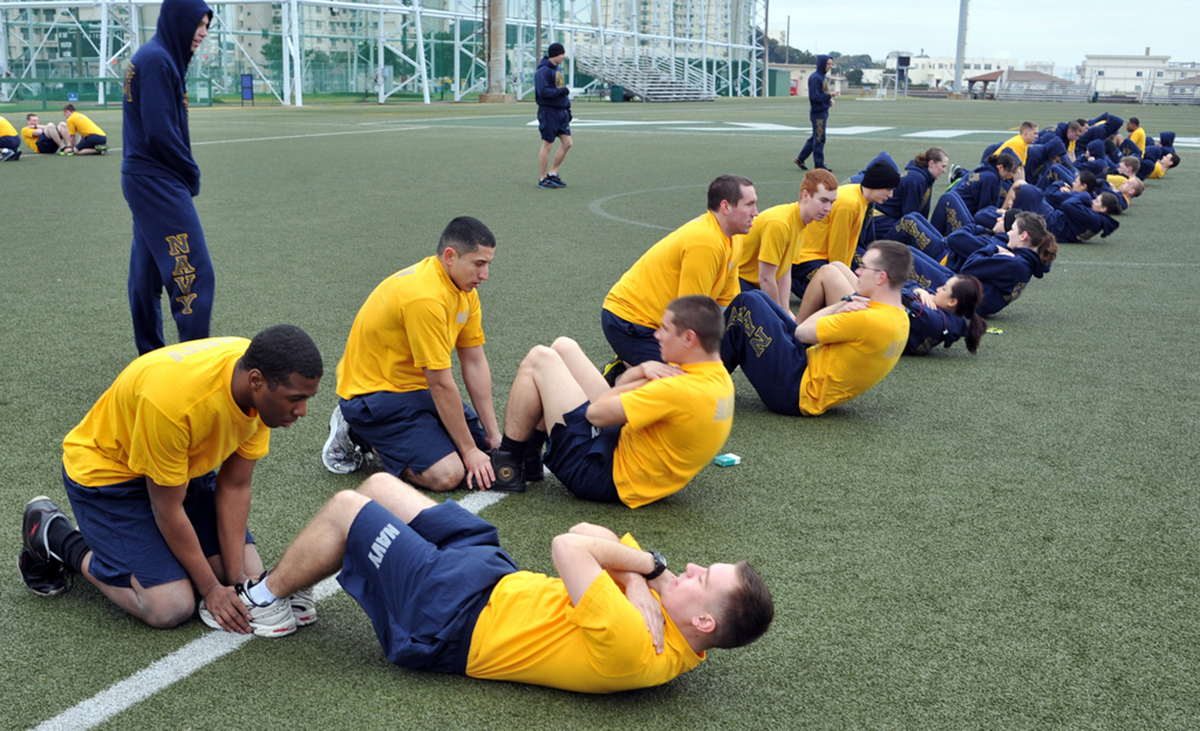Table of Contents

Where the ‘muscle beach’ is designed to attach a load to the legs via the spinal erectors, the hollow body is designed to attach a load to the arms via the core. Here’s how it’s done: Lie on your back on the floor, with your Head and shoulders clear of the floor but the rest of your spine right down to your hips in contact with the floor. Have your legs straight and your heels almost touching the floor. That’s a ‘hollow body.’ Fun, right? Well, even if you’re not interested in gymnastics, you should work on this posture anyway, because it helps correct the anterior pelvic tilt the muscle beach posture encourages, and it also helps build strength in the core.
Use these drills to get it:
1: Hollow body/hollow body rock
Start out with the instructions above. When you can hold it for thirty seconds or so, try beginning to rock. Your hips should leave the floor, your body should never ‘unhollow’ and apart from that you can please yourself, though the neater it is the better (and harder!)
2: Curl-Ups
Hang off an overhead bar. Bring your knees up to waist height with your legs bent, then bring them up to your chest and at the same time lean back til your back is parallel with the ground. You’re now in the ‘tuck front lever’ position. Return to a dead hang under control and repeat. However fit you are, two sets of ten of these will probably be enough.
The final posture we all need is the kettlebell posture
Maybe we should think of this one as the neutral posture: unlike the muscle beach posture with the chest expanded and the back strongly arched or the hollow body with the chest and back arched the other way, this one is a formalized ordinary stand. When you clean a kettlebell to the racked position, this is the posture you use.
Here’s how to get that extended-hip neutral posture:
1: Kettlebell swings
Just swing. As you swing, concentrate on extending your hips, keeping your back fairly upright at the top of the swing (don’t lean back as an excuse for hip extension) and pull your shoulderblades together.
2: Kettlebell rack walks
Rack a kettlebell and walk with it. If you try to do the muscle beach posture while you do this your chest will push the kettlebell out of the racked position; if you try to do a hollow body it will pull you over forwards. Walking with a bell racked like this will help reset the lengths of the muscles in your hips, meaning you’ll be healthier and stronger when you come to do your sport.
Read More: 10 Tips for Improving Posture and Ergonomics
If you have any questions, or you want to share your experiences, get hold of me in the comments below!
- Photo courtesy of Sarahsvati #1 by Flickr : www.flickr.com/photos/82376679@N04/7565502588/
- Photo courtesy of Commander, U.S. 7th Fleet by Flickr : www.flickr.com/photos/us7thfleet/8242155237/


Your thoughts on this